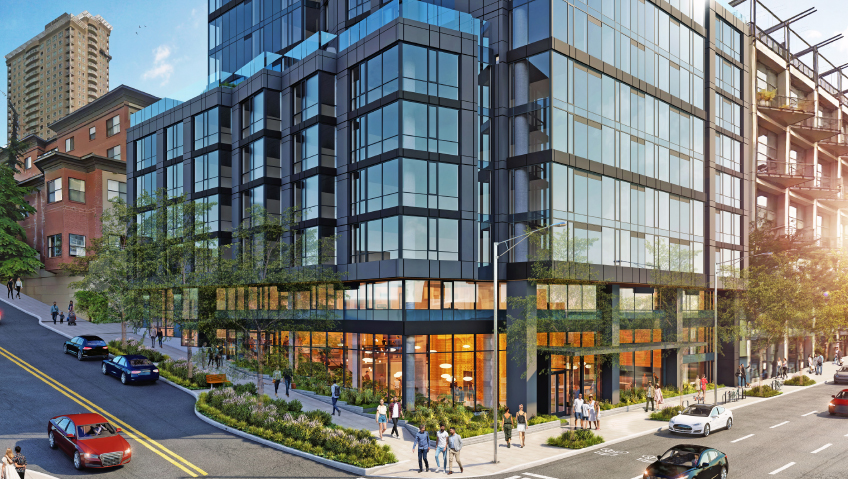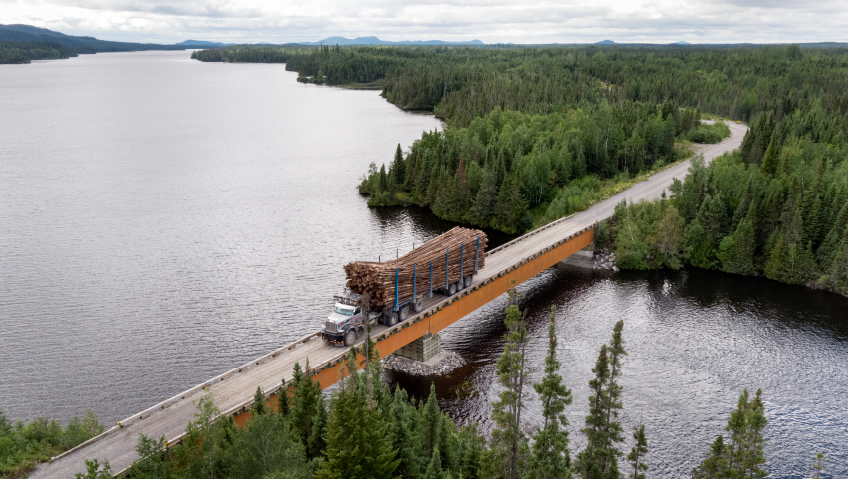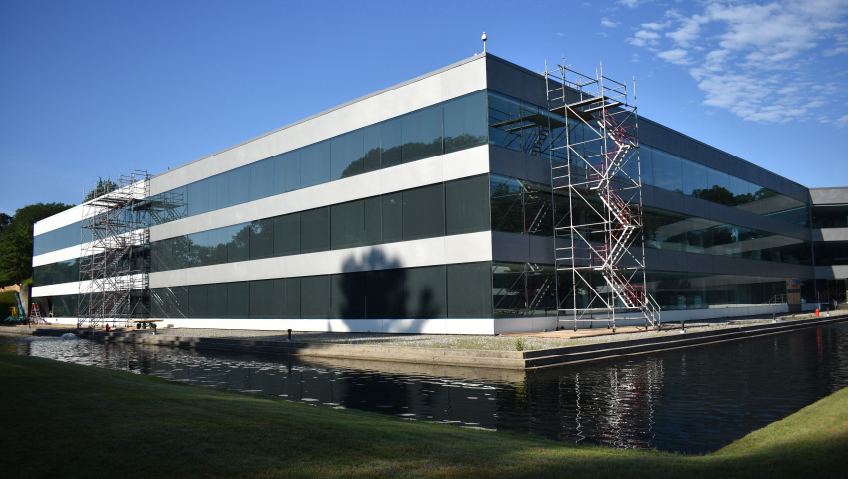At leading design firms, sustainability is in their DNA, and in this realm, GGLO stands apart. “With GGLO’s founding in Seattle, we were surrounded by sustainable design culture from its earliest days, when architects started understanding the impact of the built environment on natural systems,” says Principal David Winans, AIA.
Established in 1986 by Bill Gaylord, Alan Grainger, Chris Libby, and Clayton O’Brien-Smith—GGLO is one of America’s premier multi-disciplinary architectural firms. Encompassing much more than just design, GGLO taps into the creative minds of its staff to create custom-tailored solutions, “to craft a holistic story,” in their words.
Previously working together at a Seattle firm that designed similar project types—primarily urban mixed-use residential works—GGLO’s founders “wanted more autonomy in how projects were designed and managed, with a strong emphasis on design, client service, and work/life balance for its staff.”
Focusing on work that meets and exceeds client expectations, GGLO views projects as opportunities for responsible environmental design, balancing carbon reduction, health, social equity, and artistic expression.
The core of design
Shortly after its founding, GGLO added Interior Design services, followed by Landscape Architecture and Urban Design. In the mid-1990s, the firm developed its expertise in Sustainability, which remains a core part of its design work. The ability to design at all scales, from inside to outside and back again, is integral to GGLO’s design process.
Now, in its second, third, and fourth generation of owners, GGLO continues to uphold the vision and values of its founders. “We wanted to get our arms around all aspects of design, and supplement [our expertise] with outside consultants for engineering services,” says Winans.
Starting with its Seattle, Washington-based location, GGLO expanded to include Los Angeles, California in 2015 to serve clients along the West Coast, and Boise, Idaho in 2019 to serve Mountain West regions. “We characterize ourselves as one office with three doors which can perform all aspects of service and also supplement the smaller offices from the Seattle office.”
The roots of energy efficiency and energy codes pre-date the founding of GGLO, going as far back as 1977. Public interest motivated Washington’s policymakers to establish energy-efficiency targets and energy codes to reduce loads on utilities, minimize the need for additional facilities, and accommodate growth.
A voluntary requirement at first, the State Building Code Act and State Energy Code Act (SECA) were passed by the legislature in 1985. According to the Office of Energy Efficiency & Renewable Energy, “The State Building Code Act gave rulemaking authority to the State Building Code Council (SBCC), which oversees all building and energy codes within the state.”
In 1986, the first state-wide energy code was adopted. Based on ANSI/ASHRAE/IES Standard 90A-1980, it applied to all new buildings. More amendments came in the following years regarding more restrictive HVAC equipment codes, increased equipment efficiencies, lighting requirements, and other modifications. These energy codes have continued to evolve and remain among the most stringent in the nation.
Going green
“In the late 1990s, architects in our area were among the U.S. Green Building Council (USGBC) founders and early LEED APs,” Winans tells us. “These early adopters helped define sustainability in the built environment and there was a strong knowledge-sharing culture among firms.”
Along with LEED, Seattle’s electrical utility, Seattle City Light, offered incentives for energy-efficient features. The Master Builders Association of King & Snohomish Counties created their Built Green certification program in 1999. This set out to transform the building market to reduce the environmental impact of construction and operation of buildings.
“The affordable housing market was also developing certification systems such as SeaGreen, Evergreen Sustainable Design Standards, and Enterprise Green Communities, all of which GGLO has certified projects under. GGLO’s urban mixed-use residential projects were a perfect fit for integrating sustainable design as they accommodated many of the location and density-related priorities and our energy codes encouraged efficiency. Our affordable housing developments help address equity by improving access to safe and healthy housing to those with fewer economic resources.”
For GGLO, many projects are sustainable not just in terms of energy efficiency and eco-friendly building materials, but also in their location, with transit close at hand and walk- or cycle-ability to nearby amenities.
After taking on several projects under local incentive and certification programs, GGLO earned the first LEED BD+C: New Construction certification in 2005 for a mixed-use multifamily building in Seattle, the Alcyone Apartments. Described as “the ideal spot for those seeking a laidback lifestyle in an urban environment,” with amenities ranging from sailing and kayaking to bike trails and fine dining nearby, the Alcyone Apartments are in Seattle’s South Lake Union area.
Says Winans, “From this experience, we were hooked and have advocated incorporating sustainability in all our projects, whether or not they’re seeking third-party certification.”
The 2030 Challenges
In 2005, GGLO learned about The 2030 Challenges and began using energy models to track predicted operational energy use intensity on its LEED projects. A few years later, in 2008-2009, GGLO learned about the AIA’s upcoming 2030 Commitment to encourage firms to evaluate and reduce carbon emissions impacts from their operations and projects.
“We hosted a working group of local firms to provide input regarding proposed reporting tools and methods prior to the launch of AIA’s 2030 Commitment, and were among the first group of firms to sign on to the Commitment and report data in 2010,” says Jon Hall, Principal, AIA. “Our continued tracking and reporting of project performance has motivated us to continue seeking ways of improving year over year and gives us insights into what works and does not work,” he explains.
“More recently, voluntary embodied carbon reporting has been added to the AIA 2030 Commitment, and we were among the first firms to report data from life cycle assessment models. From this work, we were approached by the Carbon Leadership Forum to provide LCA models to help establish embodied carbon baselines for mixed-use multifamily projects.”
One of GGLO’s first projects, Café Flora, was an adaptive reuse project which saw an old laundry facility transformed into a restaurant. At the time, it wasn’t referred to as sustainable design or adaptive reuse, but simply good design and being efficient with the use of materials and resources.
“Sustainability has been in our DNA since the beginning, and this is just a natural evolution to where we are today,” adds Hall. “It was the right place, right time, right culture, and right fit; it all made sense as we evolved over time.”
Helping clients succeed
Speaking with its clients, GGLO keeps them informed about the many advances and benefits of green design and construction, such as health and wellness, energy efficiency, financial incentives, carbon reduction, and resiliency.
Recommending sustainable design workshops in Schematic Design organized around the AIA Framework for Design Excellence helps provide an overview of local policies, codes, and trends that can impact the design, and includes discussions about the incentives and design opportunities available on each project.
“From these workshops, we identify priority features to incorporate in the design and facilitate incentive discussions to help offset first costs,” says Winans, adding that, “GGLO helps our clients stand out in a crowded field.” This is integral to the firm’s holistic approach to sustainable building and shared values. “We start with seeking clients, staff, and consultants who align with our values. We make our values known on our website and in interviews.”
Since the late 1990s, GGLO has had dedicated staff focused on research, in-house consulting, knowledge sharing, and marketing the firm’s expertise, along with advocating for better codes and participation in sustainability-focused organizations. GGLO has developed standard scopes of work for proposals, workflow templates to help teams understand when to perform certain activities, opportunity workshop templates, in-house modeling expertise for operational and embodied carbon reduction, and performance tracking and reporting.
Great believers in sharing information to create an evolving knowledge base, the firm also publishes on its internal website to get the word out on lessons learned. Supporting professional accreditation, GGLO will reimburse staff for passing accreditation exams. “We look for self-starters with a natural curiosity to learn and grow and who are team-oriented with a collaborative mindset,” says Winans. “We also prefer staff with sustainable design project experience, whether in work or academic settings.”
Sustainable design is good design
At GGLO, there are differences between Net Zero and Climate Positive. Climate Positive design seeks to achieve a regenerative status. This means reducing the total carbon emissions of a project to below zero for both operational and embodied carbon. Net Zero is only focused on emissions related to operating buildings and does not consider embodied carbon emissions from building construction.
“Embodied carbon emissions are more immediate and impactful to climate change as they occur as a building is being built rather than over time. Neither Climate Positive nor Net Zero is easy to achieve at present for the scale of projects we’re typically doing on tight urban sites, but we are seeing improvements in both year over year, with operational carbon reduction leading the way. Through our deliberate design process supported by evaluation tools, close collaboration with our clients, landscape team, and engineering consultants, we are making significant progress.”
Some of the industry trends the firm is actively involved in include embodied carbon reduction in building materials, mass timber, monoblock heat pumps, CO2-based heat pump water-heating systems, refrigerant transitions in HVAC equipment, ERV systems, and resiliency planning, along with materials selections that support a circular economy and ethical sourcing.
“All our projects strive for healthy, low-toxicity materials and we educate our clients on their options,” says Hall. “There are still some products that are hard to substitute for healthier options, such as vinyl windows and flooring due to first cost and durability issues, but new materials are coming online every day and we continue to evaluate the appropriate uses.”
On the renewables side, both Washington state and California now require photovoltaics with structural and pathway requirements built in for future additions. Additionally, electric vehicle (EV) charging is now being implemented in codes. In some locations, such as Boise, geothermal is a viable option in the urban core, as the capital city has a geothermal grid.
With a significant portfolio of over 40 LEED-certified projects at all levels and many more certified under various affordable housing certifications, GGLO remains one of America’s leading firms emphasizing the benefits of sustainable design.
The company was the landscape architect for Seattle’s first Living Building school project, the Living Building Science Wing at Bertschi School. GGLO’s WesternCedar high-rise project in Seattle is designed to meet the Living Building Challenge Pilot certification requirements. GGLO’s design at the Hopeworks Station North development in Everett, Washington was part of the International Living Future Institute’s Living Building Petal Pilot Project for Affordable Housing.
“Sustainable design and Climate Positive Design is simply good design, not a separate process,” says Hall. “GGLO has deep knowledge in creating vibrant and sustainable mixed-use communities and hospitality environments that enhance people’s everyday lives.”






